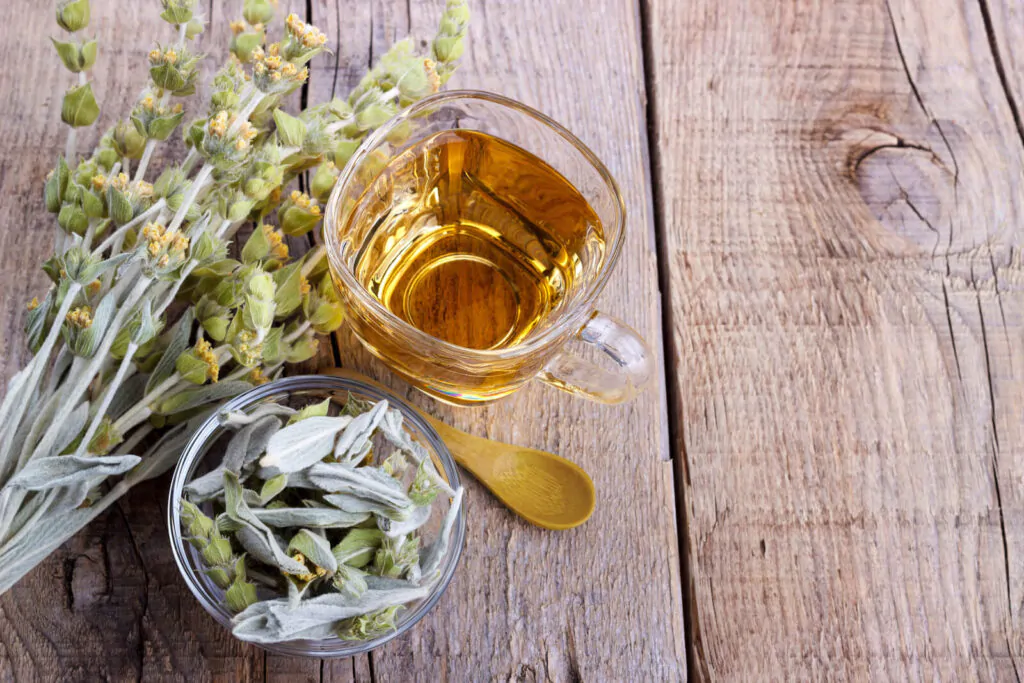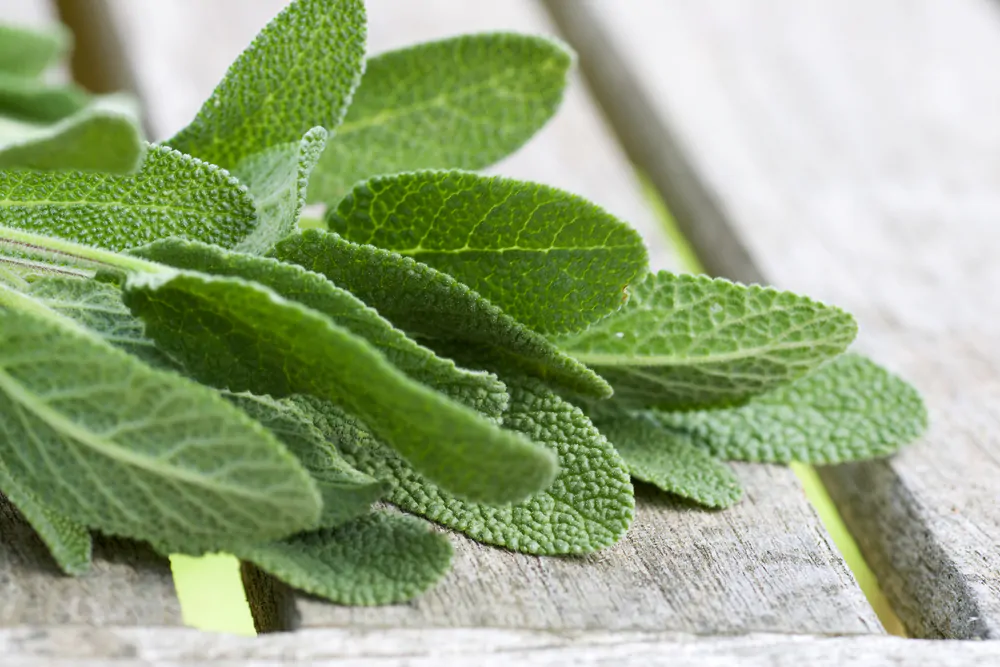Treated as a purifying herb by the ancient Roman, Arabian, and Chinese, sage tea is now my secret to a healthy and relaxing life. So what is sage tea? Dig in to learn more.

At first, I didn’t think sage tea was for me. Sage tea has an intense flavor with a strong impression of mint and bitter notes that may deter you from going for the second sip. But, sage tea tastes heavenly if you know how to make it right.
Sage tea is a herbal infusion from Salvia officinalis, a mint family native to the Mediterranean region. This insightful guide has everything you need to know about this fantastic herbal tea.
Sage Through Centuries
Aside from making tea, people in the Mediterranean and European countries treated sage as an appreciated herb in their traditional cooking. The ancient Romans first used Sage to pair with greasy food to enhance digestion. The Greeks also used sage to preserve meat and boost memory.
For medical purposes, sage tea was used as a decoction on wounds to stop bleeding treat sore throats and hoarseness. Sage plays a crucial role in traditional Chinese medicine to cure typhoid fever joint pain, reduce digestive and nervous system issues, and improve liver health.
What Does Sage Tea Taste Like?
The intense flavor is not something everyone will appreciate. However, don’t let it deter you from taking the first sip.
The sage leaves are known for their bitterness and are vaguely minty. Drinking sage tea alone may not leave a good first impression. But as long as your palate starts to agree with this specific flavor, you’ll see a sign of coziness and pine-centric notes.

The sage leaves are known for their bitterness and are vaguely minty. Drinking sage tea alone may not leave a good first impression. But as long as your palate starts to agree with this specific flavor, you’ll see a sign of coziness and pine-centric notes.
I recommend pairing it with honey to ease the bitterness. Sage tea also goes well with herbs and flowers like lavender, thyme, rosemary, lemongrass, or citrus fruits like lemon.
If you like sage tea, you might also be interested in our guide on fennel tea.
Health Benefits Of Drinking Sage Tea
- Sage tea has a high concentration of anti-inflammatory properties that target swelling and irritation built up in your throat, making it an excellent remedy to fight colds and sore throats.
- Sage is a traditional cleansing herb thanks to an impressive level of antimicrobial, antibacterial, and astringent compounds that target bad breath.
- Daily consumption of sage tea can act as a nerve-soothing remedy and boost relaxation.
- Those who have experienced menopause symptoms will find sage tea may help reduce hot flashes.
- The antioxidants in sage tea may keep premature-aging signs caused by free radicals away.
- Regular intake of sage te can help reduce stomach pains cramps, protect heart health, and boost digestion.
If you love tea, you might be interested in learning about what nettle tea is good for.
Potential Side Effects Of Sage Tea
The thujone compound in sage tea is likely to interfere with your nervous system, which may result in hallucinations and convulsions if you exceed the moderate amount.
I would advise you to stop at three to six cups a day. Do not drink sage tea while pregnant, breastfeeding, or on medication unless you get the all-clear from a medical professional.

If you happen to see any sign of allergy that relates to breathing, rash, and itchy throat, stop using sage tea right away and consult your doctor.
You might also find out guide on ginger tea helpful.
How To Make Sage Tea At Home
You need half an ounce of fresh sage leaves, sugar, lime juice, lime zest, and water to make sage tea.
- First off, bring water to a boil.
- Turn off the heat and put fresh sage leaves in hot water.
- Let it steep for up to five minutes.
- Get rid of the leaves, pour the tea into a cup, add lime juice and honey, and you’re good to go.
I enjoy drinking sage tea when it’s hot, but you can go ahead and add some ice to beat the heat. A few drops of honey go in, then give it a touch of lavender with a dash of lime juice, and you’ll have the most beautiful cup of sage tea to wake up your senses and entice your taste buds.
